


ккк
Ligand - Wikipedia
http://p217.pctrans.mobile.yahoo-net.jp/fweb/01207V0BoA4W2y6C/4k?_jig_=http%3A%2F%2Fja.wikipedia.org%2Fwiki%2F%25E3%2583%25AA%25E3%2582%25AC%25E3%2583%25B3%25E3%2583%2589&_jig_source_=srch&_jig_keyword_=Google&_jig_xargs_=R&_jig_done_=http%3A%2F%2Fsearch.mobile.yahoo.co.jp%2Fp%2Fsearch%2Fonesearch%3Ffr%3Dm_top_y%26p%3DGoogle&guid=on
Ligand
Ligand (ligand;) Receptor (receptor;) specific with Laigand) It is the material which specifically binds to receptor).
The part that a ligand couples with a target material is decided and selectively or specifically shows high affinity.
For example, the signal materials such as enzyme protein and the substrate, a hormone or the neurotransmitter and the receptor are remarkable examples.
The drug that a drug working in substitution for a ligand weakens an agonist, the function of ligand is an antagonist.
Even if the ligand which is specifically combined with protein in particular is a very small amount, Have a very big influence for the living body.
Therefore is important in a pharmacy and the molecular biological field; is studied.
[editing] an item concerned
Neurotransmitter
Psychotropic drug
Drug
Chemical decomposition
The chemical decomposition (Chemical decomposition) is a chemical reaction to change to a simple material with more than of two kinds of compounds.
Buy resolution 〈 and often merely say decomposition 〉. The chemical reaction to become the reverse constitution of the resolution with a reaction style is called chemical synthesis (chemical combination) or composition.
Specifically, photolysis and the radiolysis caused by thermolysis and light and the radiation by the high temperature are the representative resolution.
Show below an example of the water.
The water can disintegrate to hydrogen molecules and oxygen molecules by electrolysis.
Hydrogen peroxide disintegrates to water and oxygen when leave you unattended.
The state that the resolution and inverse reaction happen with a reaction style reversibly is called dissociation.
In addition, the process that a compound breaks into a low molecular weight material sequentially sequentially is called degradation 〈 decomposition 〉 in Japanese.
[editing] references
Saburo Nagakura, others (a.), "resolution", "Iwanami physics and chemistry dictionary", the fifth edition CD-ROM version, Iwanami Shoten, 1998.
[editing] an item concerned
Chemical combination
Chemical reaction
Double decomposition
It is an acquisition category from "http://ja.wikipedia.org/w/index.php?title= chemical decomposition &oldid=46322861":
Inorganic reaction
Dissociation (chemistry)
A complex and molecules and salt separate the dissociation (Kairi) or are divided and are a general process producing smaller molecules and ion or a radical.
In addition, the dissociation reaction is reversible reaction in many cases.
When covalent bond is cut, call it the cleavage as a synonym.
In addition, all ionization of them causes the dissociation that salt is divided into an ion.
The antonym (inverse reaction) of the dissociation is combination and recombination.
In the case of the separation to a small molecule, the meeting becomes the antonym, too.
[editing] a dissociation constant
About the reversible dissociation in the chemical equilibrium state expressed in the following expressions, dissociation constant (Dissociation constant) is demanded in a lower expression.
[X] shows the density of substrate X here. The dissociation constant Kd is the ratio with the compound which dissociated and the compound which do not dissociate.
Association constant (with the binding constant) Ka is a reciprocal number of the dissociation constant Kd.
By the field of biochemistry and the acid-base argument, often use a dissociation constant.
On the contrary, often evaluate the meeting ability in the big things and small things of the association constant in supermolecule chemistry and the host guest chemistry.
[editing] salt
The dissociation of the salt which occurs when dissolve salt in a solvent such as the water means what an anion and a positive ion dissociate specifically (ionization).
This can go back up to salt by vaporizing a solvent.
[editing] an acid base reaction
The dissociation of the Broensted acid in the solution means isolation of proton H+ (I refer to the clause of "acid and the base" in detail).
This reaction is the equilibrium reaction that dissociation and recombination produce at the same time.
Acid dissociation constant Ka is used as an extreme standard of the acid. As stronger acid, take the bigger Ka level and small pKa level. (pKa= -logKa)
[editing] covalent cleavage
When covalent bond splits, classify the form roughly into two ways by the electronic movement of two which made covalent bond.
It is cleavage (homolysis) and cleavage (heterolysis).
The homolysis cleavage is the form that by one is left to two atoms which two electrons were divided into after cleavage.
Two radicals are usually formed.
R-R' → R + R'
The heterolysis cleavage is a form to move to either atom which two both electronic were divided into.
A cation and one anion are usually formed.
R-R' → R: -+ R; +
Have it in the fragment thing that becoming it is robbed of an electron, and ionic chemical species adds it to of the numerator to happen of the systems such as mass spectrometers in a process of heterolysis cleavage and the homolysis cleavage as an opportunity.
[editing] a receptor
The receptor (receptor) is protein combined with a small molecule ligand.
The dissociation constant Kd is used as a ligand and a standard of the affinity with the receptor.
The Kd becomes the smaller value as the ligand which the affinity with the receptor has a big (pKd becomes the bigger value).
It is an acquisition category from "http://ja.wikipedia.org/w/index.php?title= dissociation _( chemistry )&oldid=46506559":
Chemical reaction
Solution chemistry











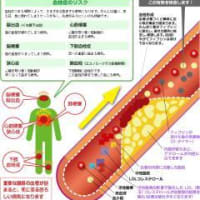

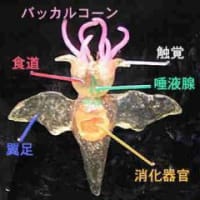
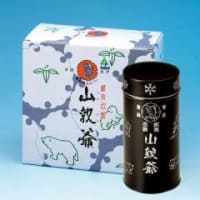

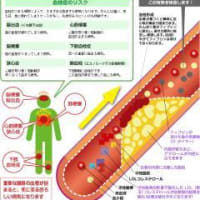

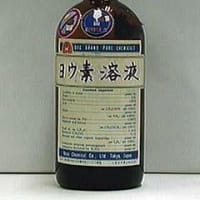

※コメント投稿者のブログIDはブログ作成者のみに通知されます